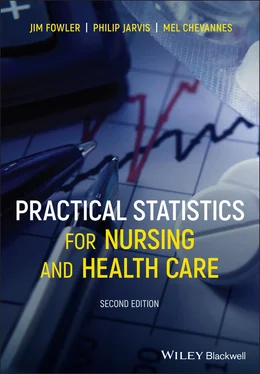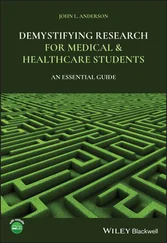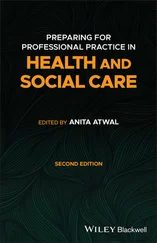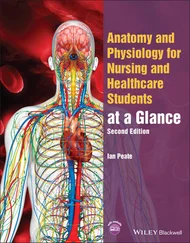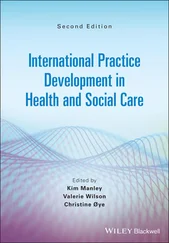In relation to midwifery, the Institute of Manpower Studies report series 242 by Wraight et al. (1993 ) found that over 40% of maternity services had recently introduced ‘team midwifery’. The practice of team midwifery is now commonplace and requires all midwives to use scientific evidence to underpin the care they provide to women and babies. For example, an understanding of the APGAR score of the baby at birth and in the immediate post‐delivery period is important to a team of midwives operating in the delivery room and the post‐natal area. A baby's APGAR score at birth and, in particular, when there is delay after birth in the baby achieving the maximum score of 10, will require accurate monitoring of heart, pulse and breathing rates. The APGAR scale is explained in Chapter 3by the well‐known Ordinal Scale.
Modern Ways of Working to Make a Difference
Roles in modern nursing have become more diverse and specialized and carry more responsibility, such as those of the nurse consultant and advanced nurse practitioner. In addition to these senior roles, the organizational context involves an eclectic mix of nurses and health care professionals, assistant practitioners, nursing associates, nursing degree apprentices and practitioners returning to practice. These health practitioners drawn from a variety of educational backgrounds and social settings meet in practice to plan and deliver care that can be complex to organize. Its planning and delivery often require understanding and interpretation of statistical data to ensure care is suitable and safe for patients. The use of hand‐held electronic devices in care settings gives immediate record and feedback to members of the team involved in providing care but it is essential for all involved to understand how the data they collect will be processed for the patients' benefit.
Nurses and health care professionals working in the community and in primary care are expected to provide accurate and reliable health information to patients about health risks and the pattern of disease. As public health workers, they undertake community profiling, health needs assessment, and provide advice about a range of topics, including the control of communicable diseases and obesity.
The requirement of specially trained nurses to prescribe drugs (from the Nurses' Prescribing Formulary for patients) places additional demands for good statistical understanding and skills in order to accomplish the task of prescribing accurately and safely. As the role of prescribing expands in the future, and nurses start to administer a greater range of medicines (Department of Health 1999 ; Nurse Prescribers’ Advisory Group 2017–2019) the need for the use of quantitative methods in nursing will increase.
In the context of care for young children, nurses and other health care professionals know that mothers are likely to be anxious about whether the weight of their child is high, low or within the expected range. The ability of these nurses to understand the principles underlying weight calculations, the influence of the child's length and gender on the weight percentile, analysis of where the child is on percentile lines and what that means puts them in a good position to explain accurately and to reassure mothers. In Chapter 4, Section 4.6 we introduce the idea of centiles and use a growth chart as an example of centiles in practice, based on WHO child growth standards (United Kingdom World Health Organisation 2009 ).
This book on practical statistics for nurse and other health care professionals is an introductory text produced to assist with the growing demand for user‐friendly worked examples that are clear and easily understood, not only by students, but also by busy practitioners. We aim to provide an introduction to the statistical techniques that are in common use in order to provide a solid foundation for those who wish to develop their understanding and nursing proficiency with the possibility of pursuing an interest in research. A glossary of all the statistical symbols used throughout this book can be found in Appendix J.
We acknowledge the contribution made by Professor Lou Cohen through his guidance over the years and whose original style persists in this book.
Jim FowlerPhilip JarvisMel Chevannes
It is possible that you have recently enrolled on a nursing, midwifery or other health care course. It is likely that you did so with high ideals and a motivation to help humankind in the relief of suffering. It is also possible that you did not enjoy handling ‘numbers’ at school, and you have sought to escape from them. And now you have in your hands a textbook that might, at first sight, look terrifying.
We wish to offer a word of reassurance. Modern health care is a ‘science’, and as such, involvement with numbers is inescapable. It was, after all, Florence Nightingale herself who recognized the importance of maintaining accurate numerical records. However, it might not be as bad as you fear. This book seeks to guide you through the subject ‘from scratch’, and we make no assumptions about your previous learning. The chapters develop in difficulty progressively through the book, and the material is extensively cross‐referenced. If you wish to ‘dip in’ to the text, you will find guidance on where to look back for under‐pinning explanations.
It is very unlikely that you will ever need to know all that is contained in this book. In the first instance, it may be simply a supporting text to help you through a statistical element of your course. Later, you may be involved in a project of some kind, when this book can help you plan correctly the gathering, presentation and analysis of your data. Some of you may then venture into an area of research, in which case the more advanced chapters in this book will give you a sound foundation in the quantitative techniques that are required.
We plead with you not to feel intimidated by the formulae that you see by flicking through these pages. How they are used is carefully described in each case. By persisting with the book from ‘square one’, reworking some of our own examples to make sure that you get the same answer, you will rapidly become sufficiently confident to apply them to your own data. And, who knows, you may even come to enjoy statistics!
1 Introduction
1.1 What Do we Mean by Statistics?
Statistics are a familiar and accepted part of the modern world, and already intrude into the life of every nurse and health care worker. We have statistics in the form of patients registered at a GP practice or outpatient clinic; hospital measurements and records of weight, temperature, blood pressure and pulse rate; data collected from various surveys, censuses and clinical trials. It is impossible to imagine life without some form of statistical information being readily at hand.
The word statisticsis used in two senses. It refers to collections of quantitative information, and methods of handling that sort of data. A hospital's database listing the names, addresses and medical history records of all its registered patients, is an example of the first sense in which the word is used. Statistics also refers to the drawing of inferences about large groups on the basis of observations made on smaller ones. Estimating the relationship between smoking and the incidence of lung cancer illustrates the second sense in which the word is used.
Statistics looks at ways of organizing, summarizing and describing quantifiable data, and methods of drawing inferences and generalizing upon them.
1.2 Why Is Statistics Necessary?
There are two reasons why some knowledge of statistics is an important part of the competence of health care workers. First, statistical literacy is necessary if they are to read and evaluate reports and other literature critically and intelligently. Statements like ‘the reduction in mean number of migraine days was 3.5 (SD 2.5) for manual versus 2.4 (3.4) for sham (adjusted difference −1.4, 95% confidence interval −2.4 to −0.3; P = 0.005) at weeks 13 to 16’ (Xu et al. 2020), enable the reader to decide the justification of the claims made by the particular author.
Читать дальше
